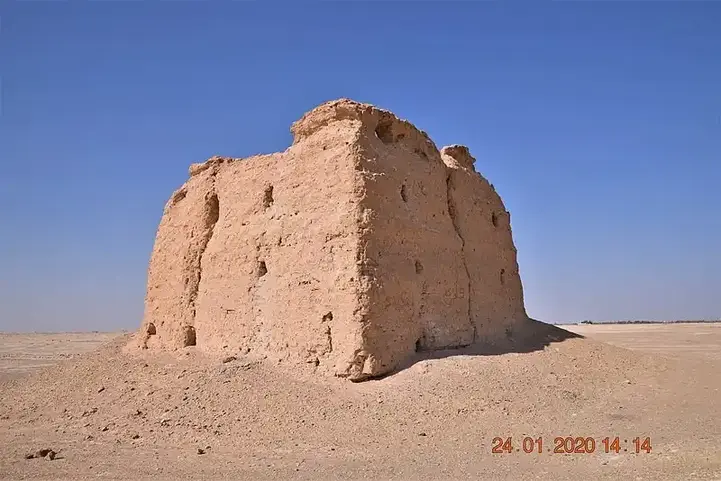The Lost City of Ubar, one of the greatest secrets of Arab history
It is the ancient Arab city, which is also known as "Atlantis of the Sands", "Eram That Al-Bamad" and "Shasar", which are mentioned in history books and historical novels, it is the lost city of Ubar. It is one of the Middle East's greatest mysteries throughout these centuries, so much so that it has puzzled many archaeologists and explorers. Come together to get to know this mysterious city with a long history.
Show key points
- The lost city of Ubar, also known as "Atlantis of the Sands" and "Eram That Al-Bamad," is considered one of the Middle East's greatest historical mysteries.
- Believed to be built around 5,000 years ago by Shaddad bin Aad, Ubar was located in Dhofar, Oman, and was renowned for its towering architecture, fertile lands, and thriving trade.
- Ancient accounts describe Ubar as a majestic city with rivers and palaces, playing a major role in trade, especially in spices and oils.
- ADVERTISEMENT
- According to religious tradition, Ubar was destroyed by a divine storm as punishment for its people's defiance of the Prophet Hud.
- Explorer Bertram Thomas searched for Ubar in 1930 using a balloon and guidance from local Bedouins but ultimately failed to find conclusive evidence.
- In 1940, Wilfred Thesiger discovered potential ruins in Shasr, yet his findings lacked definitive proof linking them to Ubar.
- A major research effort in 1992 led by Nicholas Clapp used modern satellite imagery and ancient maps, marking the most advanced attempt to locate the city.
History of the city of Ubar

Researchers date the construction of the city of Ubar back to 5,000 years ago, and it played a prominent role in the past, as the city was built by Shaddad bin Aad and ruled it for a long time in the south of the Sultanate of Oman, in the Dhofar Governorate, in an area known as Shasr. It is said to have taken nearly 300 years to build, as it was a wonderful place characterized by high-rise buildings and magnificent palaces, and it was also characterized by its fertile land and it is said that it contained running and fresh rivers. In addition, it was a center of trade in the Arabian Peninsula, especially the trade in spices and oils. Many assert that what history has narrated in describing the city of Ubar is not comparable to its truth in terms of splendor and grandeur of its buildings, constructions and manifestations of nature.
Recommend
In addition to the well-known story of the people of Aad, where they were one of the Arab peoples that some claim to have lived in this region, and God sent them a prophet hood, so they refused to respond to his call, so God's wrath fell on them and sent them a strong storm that uprooted men and high-rise buildings from the ground and destroyed them destructively, and that wind shed on them for seven nights until the city was completely destroyed and hid all its landmarks and became forgotten, except for the Prophet Hud and everyone who believed with him. The people returned worshipping idols, and took the echo and steadfastness and aerosol as their gods, and when the Prophet Hood came calling them to worship God to avoid the torment of the Day of Resurrection, they described the people returned foolish, false and reckless, and continued immersed in their desires and tyranny and disobedience to the call, until what we mentioned happened.
Attempts to search for the city of Ubar

• Try explorer Bertram Thomas
In 1930 Bertram came to the Empty Quarter desert and began to search for ruins of Ubar with the help of the Bedouins who inhabited that area. Unfortunately, his attempts failed and he did not reach them despite his presence of some ruins and monuments, but they were not conclusive evidence of the whereabouts of the lost city of Ubar. Moreover, he used a balloon in his research but also to no avail. The man died without realizing his dream. About his journey, he wrote a book describing what he had seen and experienced, called Arabia Felix, and in which he stressed his deep sadness at not being able to find the city of Ubar.
• Try the explorer Wilfred Thesiger
In 1940 Wilfred found some remains of a well and a building he said was a fortress that was in the city. This is in an area in that desert called Shasr, but he also failed to prove that these ruins belonged to the lost city. Thesiger's attempt was the prelude to another attempt at an exploration company in 1948, and confirmed his assertion, but they did not provide any logical evidence for this.
• Nicholas Clapp's attempt in 1992
Kallab came at the head of a research mission from the US state of Los Angeles consisting of a number of archaeologists and historians, and Nicolas Clapp came supported by his good study of previous attempts in addition to reading the book "Arabia Felix", and also was armed with a set of maps drawn by the Alexandrian geographer Claudius in Tolemy in 200 AD. Not only that, but dogs also used modern means, especially satellite images.








